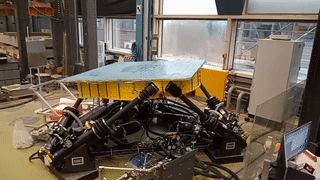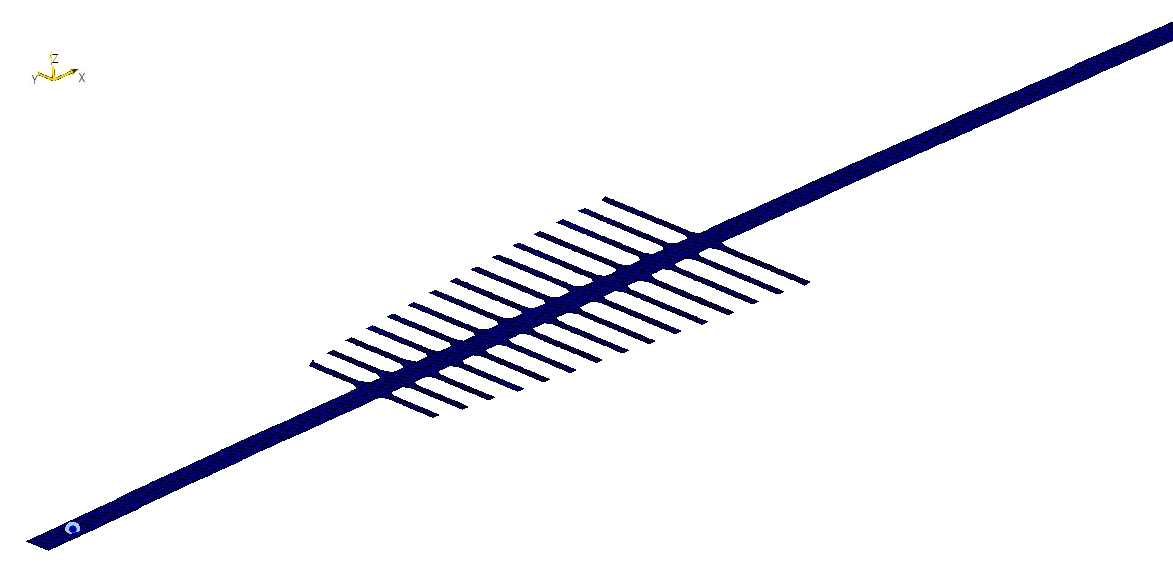News
Orbit jump and energy harvesting in nonlinear harvesters
New paper out, presenting a circuit solution for time-sharing orbit jump and energy harvesting with nonlinear piezoelectric energy harvesters
The orbit jump in the effective hysteresis range of a nonlinear piezoelectric harvester is realized by boosting the harvested energy (from low-energy orbits) back to the mechanical structure. Thus in the phase space, the harvester is forced to leave the original stable fix point (low-energy orbits) and moves toward another stable fix point (high-energy orbits) with the aid of the unstable spiral and saddle point bifurcation. When the oscillator reaches the high-energy orbit, the harvested power yields a ninefold increase, compensating for the orbit jump process's consumption and leading to more harvested energy.

Tailored topological edge waves for energy redirection
New paper out, presenting a novel approach to redirect elastic energy along edges of a tetrachiral lattice structure
Highly localized protected edge states are obtained leveraging a hierarchy of scales through the addition of microresonators that impose tunable symmetry breaking and reconfigurable mass. This allows to achieve precise positional control in the macroscale frame lattice, thereby opening up opportunities for robust signal transport, vibration control and energy harvesting.

A graded metamaterial for broadband and high-capability piezoelectric energy harvesting
New paper out, presenting a graded metamaterial-based energy harvester targeting low-frequency ambient vibrations (<100 Hz)!
The harvester combines a graded metamaterial with beam-like resonators, piezoelectric patches, and a self-powered interface circuit for broadband and high-capability energy harvesting. Experiments are conducted, with realistic vibration sources, to validate the derived theoretical and numerically simulated results. The harvested power of the proposed design yields a five-fold increase with respect to conventional harvesting solutions based on single cantilever harvesters.

Successful R'Equip grant and a Hexapod
Our laboratory at ETH Zurich is about to be expanded! After a successful R'Equip grant application, we have purchased a 1D scanning laser Doppler vibrometer (SLDV) capable of measuring the out of plane motion on complex surfaces up to 100 kHz without contact. The SLDV will make up the core of the new dynamic testing platform. It will be complimented by a set of 3-axial piezoelectric actuators with a dedicated multichannel amplifier (up to approx. 30 kHz); an air-damped optical table to isolate tested models from parasitic vibrations; and a multichannel acquisition system with a programmable CPU (FPGA) to execute quasi-real time actuation (useful for e.g. hybrid testing and immersive experimentation) by interfacing for instance 3 component accelerometers and actuators.
Furthermore, the chair of "Structural Mechanics and Monitoring" at ETH Zurich recently added a MTS hexapod system to their laboratory. Dubbed "MadSim", it is capable of applying force and motion in six degrees of freedom to structures enabling us to evaluate the behaviour of possible MetaVEH designs under a diverse array of real-world vibration phenomena.


Cancelling reflections
When experimenting with wave propagation in complicated structures, such as the graded meta-harvesting design, it often is difficult to distinguish phenomena caused by the meta-structure under study from those of the whole system. One method to remedy this challenge is by implementing elastic “immersive wave experimentation” to actively remove the unwanted boundary reflections. The application of a secondary force at, e.g., the free ends of the host beam, leads to the cancellation of the reflected energy, creating a transparent boundary. We have taken the first steps to reach this goal by attaching piezoelectric actuators to the left end of the graded meta-structure, acting as both the excitation (SRC) and cancellation (IBC) source. After successfully applying this procedure to cancel up to the 4th order reflections on the left end of the beam, the next step to also apply the method on the right end of the beam.

Torsional waves for energy harvesting?
To investigate the effect of different waves on the trapping capabilities, we desiged an elastic waveguide loaded by a graded array of resonators with variable length and broken symmetry. This gradual variation still promotes rainbow trapping of flexural waves throughout the array. However, the broken symmetry with respect to the shear center of the waveguide, activates a mode conversion between impinging flexural waves and torsional waves traveling in the opposite direction. Coupling waves of a different nature and polarisation through symmetry broken designs allows to enlarge the energy trapping capabilities of graded arrays of resonators.

Harvesting energy!


To test the harvesting capabilities of the prototype piezo electric patches were attached to the parasitic beams and connected to a circuit board. We chose to explore AC-DC interface circuits which regulate the phase difference between piezoelectric voltage and current thereby accounting for the DC power supply demand of IoT devices. Utilising a self-powered interface circuit a portion of the harvested energy can be repurposed to rectify the harvested energy output.
To showcase the advantages of the chosen graded meta-structure, the harvested power is compared to the harvesting capabilities of a host beam with only one pair of parasitic beams attached. It can be observed that the harvested power is enhanced about 6 times with use of the graded meta-structure. These results clearly show the high-capability energy harvesting of the designed energy harvester.
Fabrication and first experiments

After settling on a grading profile, several prototypes of the design were fabricated out of aluminum using water-jet cutting. The host beam has a length of 1 m, a width of 3 cm and thickness of 2 mm. Fifteen pairs of parasitic beams with a fixed width of 1 cm and varying length are periodically distributed along the host beam.
Using a 3-component Scanning Laser Vibrometer (SLDV), the wave propagation along the structure can be measured and visualised. One can clearly see how the parasitic beams exhibit a strong amplification of their vibration when the wave passes along the host beam. The next step is to attach piezo patches to the small beams and harvest energy!


Choosing the mechanical metamaterial design
There are two significant design targets for vibration energy harvesting (VEH) systems:
(a) to increase the harvested power at resonance and (b) to increase the off-resonance harvested power, i.e., to broaden the harvesting bandwidth. From the mechanical side, we chose to utilise the rainbow trapping effect to enhance both of these targets. By gradually increasing the length of the parasitic beams along the host beam, the structure acts as a spatial frequency filter on the propagating wave whilst simultaneously slowing down the group velocity of the traveling wave. This enables the local resonant parasitic beams more interaction time with the slow traveling wave inside the graded metamaterial. Therefore, a higher vibration amplitude of the parasitic beams can be achieved, which guarantees the high energy harvesting capability. On the other hand, compared with the non-graded metamaterial-based energy harvesters, the effective energy harvesting bandwidth can also be increased due to the spatial frequency separation.


